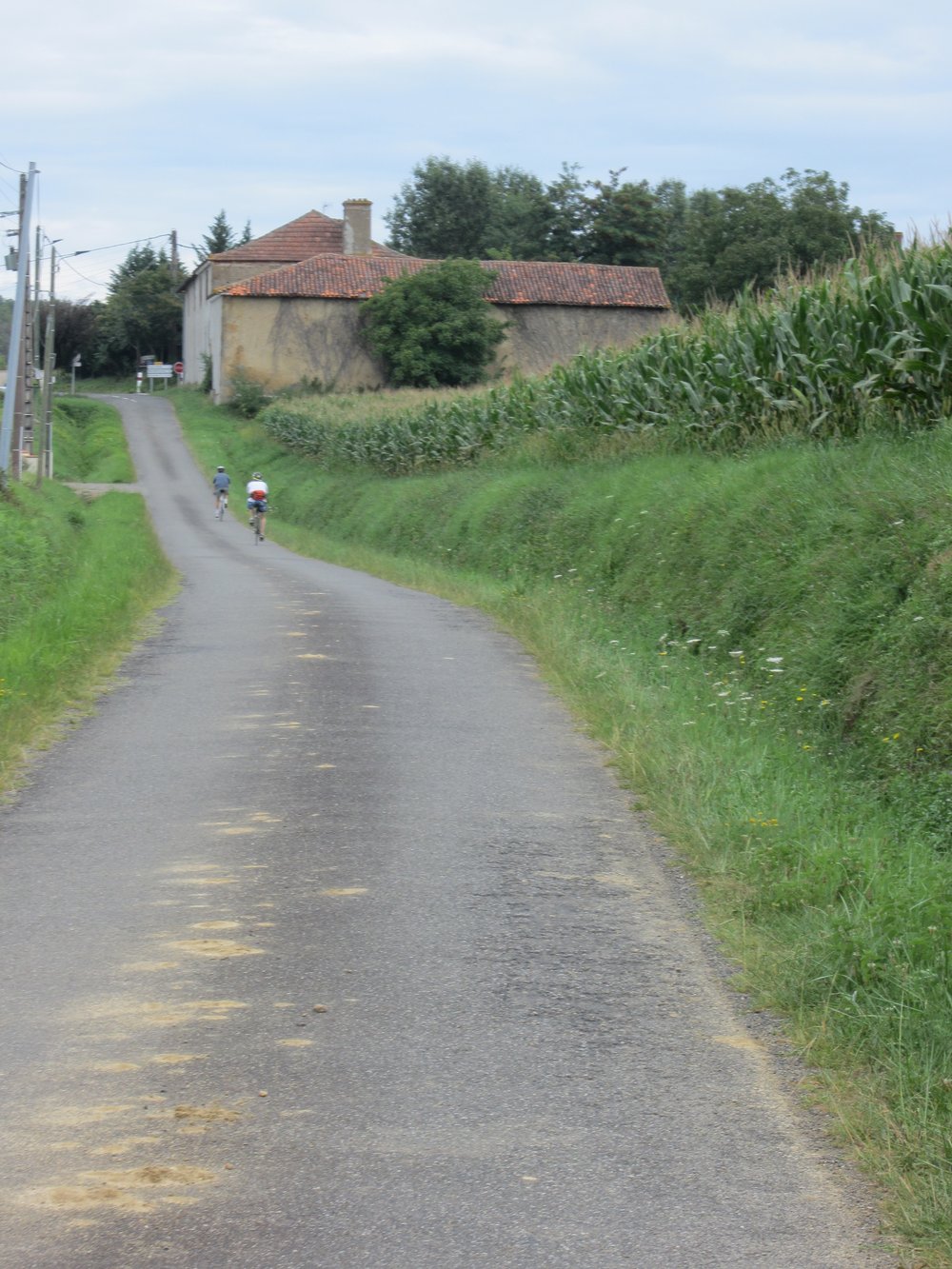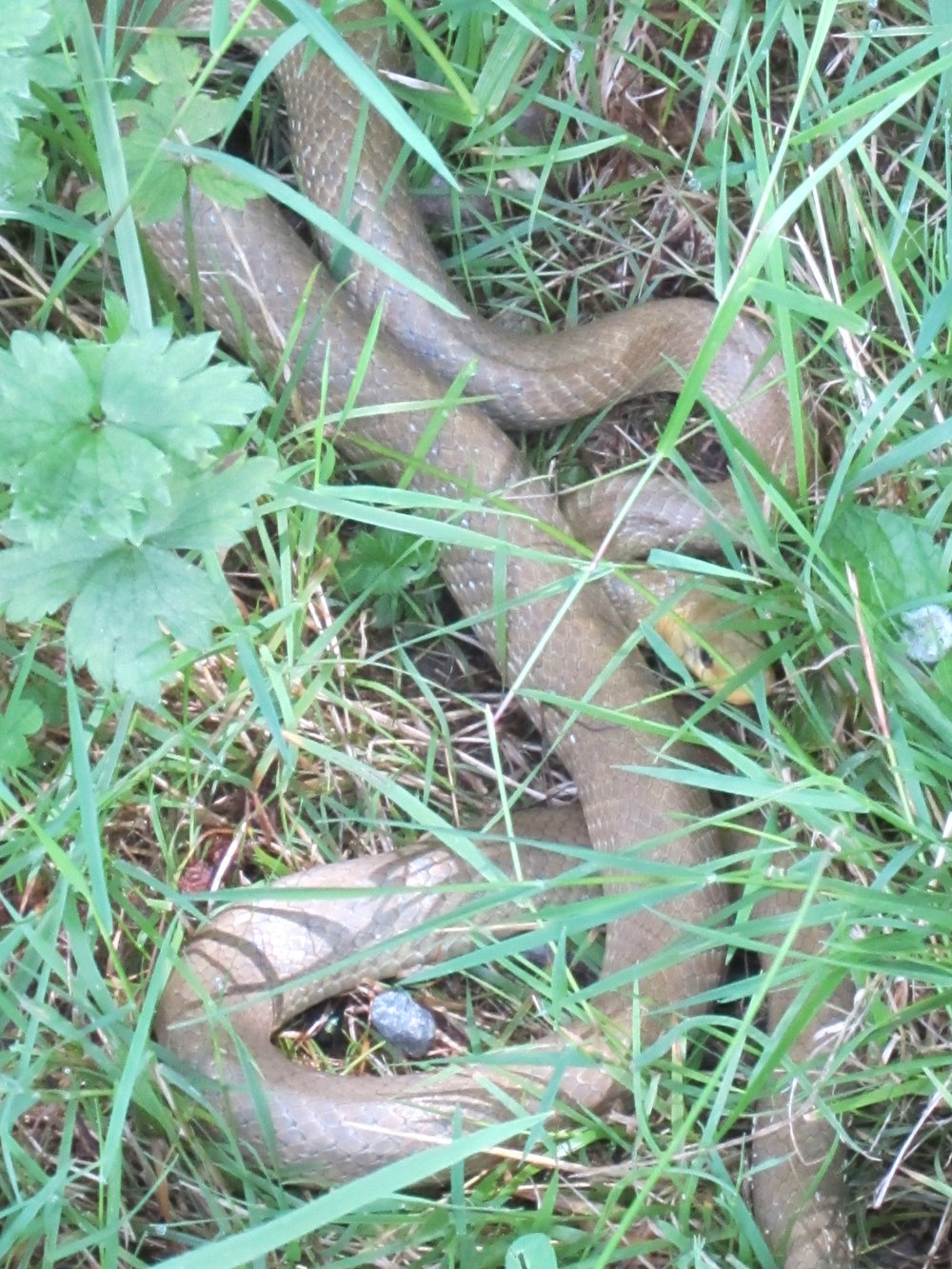
I saw the Harrier hovering over a wide field. It looked like it was suspended from the sky itself, staying miraculous in place as it targeted the ground. There was a glint of red, and a fanned tail. Then it dropped, like a ball dropping from the sky and vanished into the grass. I figured it would take a while for it to conduct its killing business so I bicycled on, not wanting to keep my sister and brother-in-law waiting too long.
We all shift into low gears as we prepare for the steep uphill ride that will take us up and over into the neighboring valley. The road is narrow, one-lane, gravelly, and winding. As we bike—slowly—I admire the pink and white cosmos in bloom by the side of the road, the queen anne’s lace that spreads across fields, and the acacia trees with their wispy red flowers. To our left, in the distance, we see the outline of the Pyrenees, especially the dramatic rise of the Pic du Midi. The houses of Antin thin and we’re soon surrounded by woods. There is a false summit, with a miniature valley positioned high in the hills. A few houses sprinkle the landscape, so isolated from the rest of the world. “It’s these inter-valley communities that interest me,” Becky says. And me too. The people who live here speak their own patois, live with little contact with their neighbors. It’s amazing to think of the isolation in such a busy country. Every small farm house that we pass has its own odor depending on what they are raising: Geese and ducks, an odor that is sharp in the back of the nose; beef cows, a flatter smell that mixes with the earth; milk cows, all sweetness.
Soon, we are sailing downhill, the breeze cooling the sweat under my helmet. We stop at the bottom of the hill to sit on a bench by l’Arros, a stream that flows out of the Pyrenees. We’re in the town of St. Sever, known for its Abbey.

My grandmother loved taking this road through the woods to visit Villec
At a turn in the road, Olivier and Becky are waiting for me, though I had told them to go on, so I could stop and look at birds. They are snacking on blackberries, growing by the side of the road. And, Becky wanted to be sure that I saw the lamas in the field, napping in the sun. Lamas, like the donkey, are new to the area.
Becky leaves her bike and wanders to the side of the road to pee. She unzips her pants, and begins to crouch when she leaps into the air, screaming. In all the acres of land, in all the miles of road, she has decided to crouch to pee, right over this:
